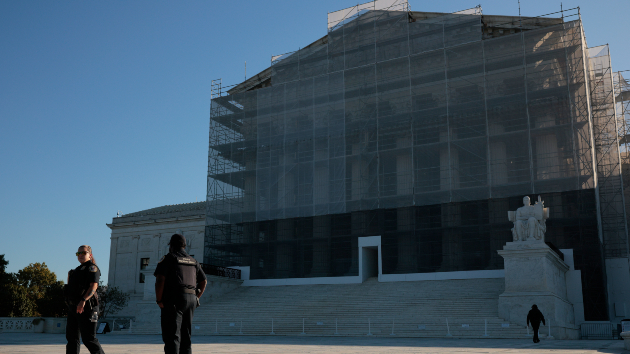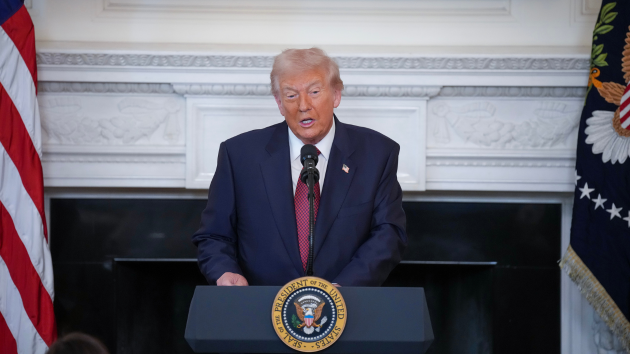In ‘monumental’ voting rights case, Supreme Court weighs use of race in redistricting
Written by ABC Audio ALL RIGHTS RESERVED on October 14, 2025

(WASHINGTON) — When a federal court concluded Louisiana’s 2022 congressional map violated the Voting Rights Act by discriminating against Black voters, the state legislature created a new map with a second majority-Black district to comply with the law.
In a blockbuster case that could be decided on the eve of next year’s midterm elections, the U.S. Supreme Court on Wednesday will consider whether the use of race in drawing that extra district ran afoul of the Constitution.
“The key question is whether a state can take race into account, indeed whether a state must take race into account, or whether that violates the Equal Protection Clause,” said Sarah Isgur, SCOTUSblog editor and ABC News legal contributor.
The outcome of the case could determine whether Louisiana and many other states may have to redraw their maps in a race-blind manner, which could in turn impact minority representation and the balance of power in legislatures nationwide.
“This could be a monumental decision,” said Jeffrey Rosen, president and CEO of the National Constitution Center.
For decades, the high court has said that race cannot be a predominant factor in drawing congressional district boundaries, but it has also given states breathing room to consider race in order to ensure minority voters receive equal opportunity to elect representatives of their choice.
Section 2 of the Voting Rights Act has long been a guardrail against states “packing” Black voters into districts and “cracking” communities of color into other districts with an aim of diluting their electoral influence.
More than one third of Louisiana’s population is Black. Two of its six U.S. congressional districts are majority-Black — both are represented by Democrats.
A group of self-described “non-white voters” sued the state over the second majority-minority district, setting up a legal clash of two competing principles: Section 2’s requirement that minorities be given equal opportunity to participate in the electoral process, and the 14th Amendment’s equal protection guarantee of race-neutral treatment by the government.
“Section 2 has been absolutely critical in protecting voters against racial discrimination in voting, and it’s been working in terms of moving us toward a true multiracial democracy where race doesn’t matter,” said Sophia Lin Lakin, director of the Voting Rights Project at ACLU.
“But what we know and what was shown in Louisiana, and multiple federal courts have agreed with us on this point, is that we’re not there yet,” she said.
Louisiana and the voter plaintiffs argue in court filings that racial classifications are “uniquely odious” and unconstitutional. There should be “zero tolerance for any consideration of race,” the state told the justices.
“If the court accepts those arguments, it could effectively dismantle Section 2,” said George Washington University law professor Spencer Overton. “And if that happens, that could allow legislatures like Louisiana, Georgia, Alabama, Mississippi, Texas, to dismantle districts where Black and Latino voters have an opportunity to elect candidates of their choice.”
“Even in states where legislatures are sympathetic to minority voters,” Overton added, “opponents of minority voting rights could bring lawsuits claiming that districts where voters of color have an opportunity to elect the candidates of the choice are unconstitutional racial gerrymanders.”
The Supreme Court’s conservative majority has signaled growing skepticism of racial classifications in other contexts, including college admissions, as well as the electoral process.
In a landmark 2013 opinion in Shelby County v Holder, the Court gutted Section 5 of the Voting Rights Act which had required states with a legacy of racial discrimination to seek preclearance from the Justice Department before implementing changes to voting laws.
Eight years later, in a narrow 6-3 decision in Brnovich v DNC, the Court narrowed the scope of Section 2’s protections around rules governing the time, place or manner of voting.
“Section 2 is the only part that imposes meaningful requirements that voting districts be created for racial minorities,” Rosen said. “What’s at stake is whether there’ll be any teeth left to the Voting Rights Act at all.”
The court could uphold Louisiana’s map — and two majority-minority districts — though most legal analysts think it’s unlikely.
Alternatively, the justices could rule narrowly in favor of the challengers, finding the map relied too much on race as a factor and force the legislature back to the drawing board. A broader ruling could potentially address the future of Section 2 overall and clarify how and whether any consideration of race in gerrymandering might be legal.
A decision is expected by the end of June 2026 when the court’s term ends.
Copyright © 2025, ABC Audio. All rights reserved.





